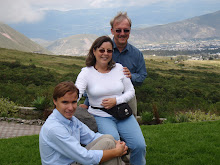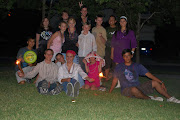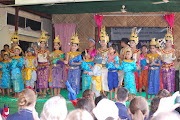October 3, 2009 – Sue: Cambodia
I’m still trying to catch up with the background information leading up to our adoption journey, and now we have arrived in 2009. We are an active, healthy family of three. Connor is a sophomore in a Christian High School, and playing baritone in the high school marching band. Every two years, the band does an international trip/ cultural exchange/ mission trip to some third world area, usually Asia. For 2009, the trip is to Cambodia, a country torn apart during Pol Pot’s reign of terror as one of the world’s worst dictator/mass murderers. He annihilated about 2 million people in his own country during a four year period from 1976-1979, Cambodia’s Communist “movement”. Basically, “if you’re not Red, you’re dead” – literally.
Jeff and I were going on the trip, too, as many parents did. Our job was getting “box # 5” on and off the buses, in and out of hotel storage rooms, until we delivered it to the orphanage to which it was designated.
We stayed one night in Singapore on the way to Cambodia, and one night in Hong Kong on the way home. The trip started in northern Cambodia, in Siem Reap, with visits to Angkor Wat temples along with our visits to the local orphanages/schools for cultural exchange and donations, and continued on a six hour bus ride down to the capital, Phnom Penh, a larger, wealthier city with a population of about 2 million people. The Cambodia trip took place over an 11 day period – the February week off of school.
Prior to our departure for Cambodia, we were in touch with David from Advocates for Orphans International, and had volunteered to be a host family (if needed), of a child (or two), for the orphans visiting from Ukraine in the March group. We told David that, while were not adopting, we would certainly provide a host family for some children, enabling them to meet their forever family.
Great – he’ll keep us on his list.
Off we go, for a trip that changed our lives forever. In Siem Reap each morning, when you opened your door, the smell of burning garbage permeated your senses, because although many modern packaging is available for products, there is no recycling, and little money for wood, so people burn what they have… garbage and packaging. Most highways are dirt, most babies are diaper-less (when they have to go, you just hold them out) and a lot of residents were obviously lacking medical and dental care that we take for granted here in the United States. Millions live below the poverty level, and are basically living a day-to-day survival as their norm. The homes are mostly single story, raised huts on pylons (for the rainy season – we were there in the dry season), sometimes lucky enough to have a large, square pit hollowed out in their front yard to catch the rain to use for animals, bathing, and whatever other water uses they have during the dry season. Some homes have thatched sides, corrugated tin roofs, and various materials like plywood and metal pieces attached here and there. When there is a roofing material like corrugated metal, you often see a hose running from the roof to a large clay pot with a wooden lid that catches the rain water. I assumed this was for drinking water. Homes like this made up the majority, and had neither plumbing nor electricity.
Of course, there are modern conveniences, beautiful large homes here and there, richer parts of town that have manicured lawns and fences with barbed wire along the top. Many parts of the “downtown” look like a coal mine town from the 1950’s, except with an eclectic mix of building styles influenced by French, Middle-Eastern, Vietnamese, Chinese, and European. As our bus lumbered down the roads through town, you see a well-maintained home or business, and then hovels with a patchwork of materials and goods, with a rotting pile of garbage sitting in the street. About 35% of the people in Cambodia live below the poverty line, which is $ 2.25 per day for a family of five. The rest stop had a tiled bathroom, but the toilet is a hole in the floor, and you flush by dipping a plastic pot into a cistern of water and dumping it down the hole. No toilet paper or soap. Children everywhere, selling scarves, bracelets, books, trinkets, to the rich tourists, hanging around patiently until you are done eating your lunch, done snubbing your nose at your sandwich because it has or doesn’t have the right amount of mayo, or because you’re not in the mood for whatever lunch meat or bread it was made with that morning. They politely but eagerly, almost lovingly, take the Styrofoam lunch box with your uneaten food and whisk it away out back to carefully sort and eat your discarded food.
Basic components of their infrastructure, like sewer treatment plants, city water, and electricity to the homes are missing in most areas. Even the large city of Phnom Penh, with 2 million people, and government buildings and the king’s palace, apparently has sewer lines that run into the estuaries, where many, many morning glory plants “clean” it. Fishing boats are out on the same water. There is construction going on here and there, but it has taken a very, very long time to start recuperating from the devastation of civil war and the scar of the Khmer Rouge’s reign of death.
The people of Cambodia have captured my heart forever. Strikingly beautiful bronze faces, with strong cheek bones and fiercely black eyes. The women are often stunning. Throughout the population, there are other influences; many Chinese, Vietnamese, and the French/European influences from earlier in the 1900’s. Although some look suspiciously at you and your bus full of noisy high school students, most smiled and waved right back at you. The Cambodians are overwhelmingly a warm, happy, gracious people. And that does capture your affections. But everywhere you travel, back roads, main roads, large city, small city, simply everywhere, there is a looming sense of total, absolute, abject poverty. Poverty is like a national character, covering all people and all things with a blanket of unseen, wet, grey destitution. It’s pervasive. The reality of the poverty-stricken condition in which so many of these people survive is nothing short of mind-numbing. A family of five could survive for the week on what one of us leaves behind on our plates for the garbage disposal in a day. Day by day, the severity of the situation sinks into you like a cannonball of sorrow. It sits there inside you, heavy and sad.
This is how God ground down my heart, like the mortar and pestle grinds wheat into flour. I knew, as surely as I was standing there in their dirt road villages, that there were many, many more neighborhoods like these in the world than there were like mine in San Jose. Of course, there were happy times on the trip; visiting the schools and orphanages, passing out the stuffed beanie babies and candy, meeting the many children at each location, wishing you had more to give them.
Deuteronomy 15:11 For the poor shall never cease out of the land: therefore I command thee, saying, Thou shalt open thine hand wide unto thy brother, to thy poor, and to thy needy, in thy land.
I was very happy we had those tubs filled with school supplies. It was wonderful meeting and speaking with so many children and teachers. The awful part was that I knew we would come home to our iPods and big-screen TVs, double-mocha lattes and 16 oz rib eye steaks, and that they would walk the dirt paths through dangerous neighborhoods to their hut with no toilet.
God was blessing me. He was blessing me indeed!
Sunday, October 4, 2009
Subscribe to:
Post Comments (Atom)













































No comments:
Post a Comment